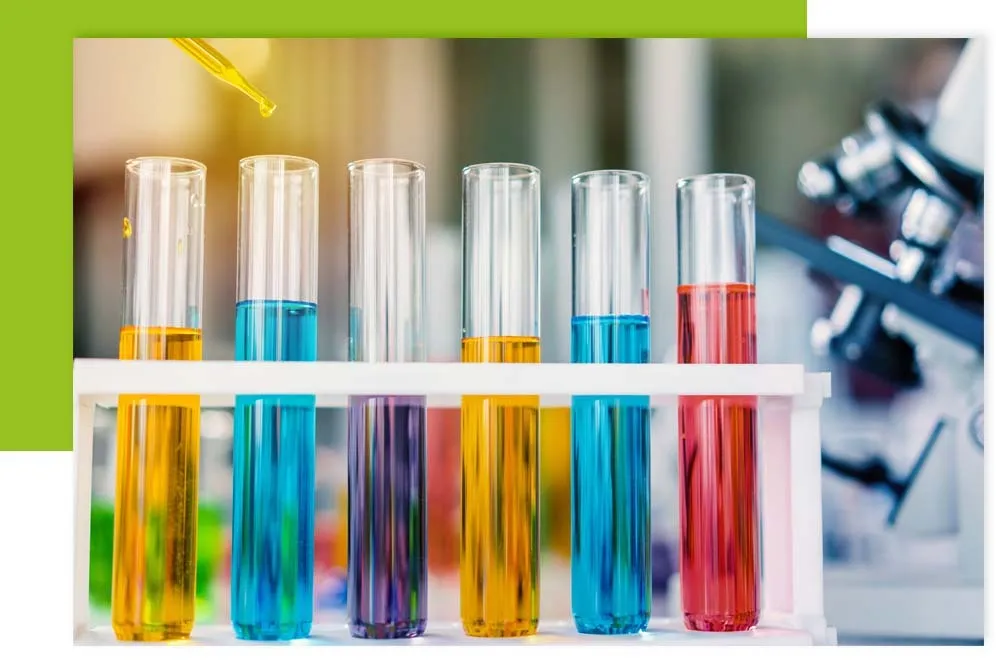Our products are based on specialty chemicals
At KADION we offer you a comprehensive solution based on chemical products and solutions adapted to the specific needs of your company and sector.
We have been distributing chemical products for over 24 years, and thanks to this experience, we have the expertise to offer you a wide and comprehensive range of products and ingredients. Our purchasing power allows us to constantly add new products to our portfolio.

Pigments, both organic and inorganic, and soluble colorants offer color solutions tailored to a wide range of industries. From intense and versatile shades to highly stable and pure options, each family provides specific properties that enable precise, high-quality results in diverse applications.
Effect pigments add brilliance, depth, and optical variations that enhance all types of surfaces. This family includes metallic and pearlescent pigments, capable of generating intense reflections, plays of light, and unique finishes for both interior and exterior applications. Their versatility allows for differentiated and highly visual results depending on the material and formulation used.